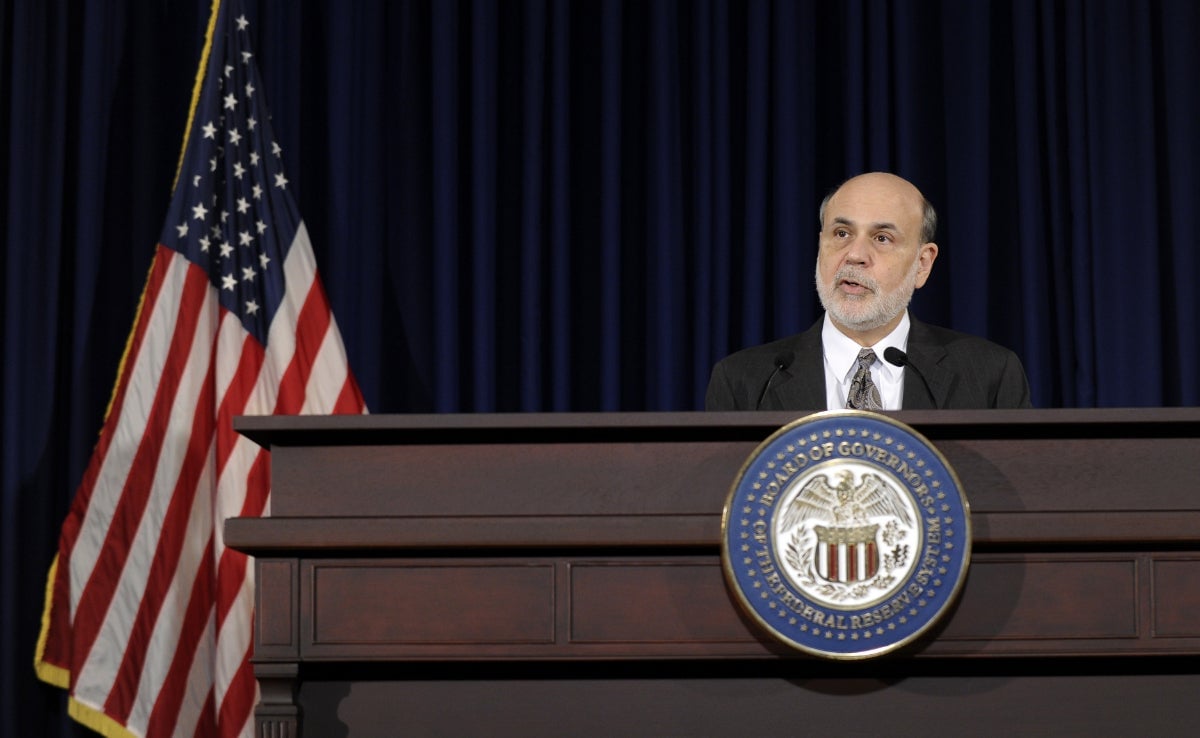Here’s what every major bank had to say about the Fed’s decision to taper
The Federal Reserve’s decision to tamp down on its bond-buying program yesterday was something of a surprise, as many observers of the US central bank thought a call to ease up on bond-buying might have to wait until next year. But perhaps even more surprising was the largely positive reaction of US financial markets. Stocks soared. And after a bit of volatility on the actual announcement, long-term bond yields only edged up slightly. (Though they are on the rise today.)

The Federal Reserve’s decision to tamp down on its bond-buying program yesterday was something of a surprise, as many observers of the US central bank thought a call to ease up on bond-buying might have to wait until next year. But perhaps even more surprising was the largely positive reaction of US financial markets. Stocks soared. And after a bit of volatility on the actual announcement, long-term bond yields only edged up slightly. (Though they are on the rise today.)
How’d the Fed pull that off?
Much of it had to do with the bank’s decision to offset the taper—which, on its own, amounts to a reduction of support for the economy—by talking up its concern about falling inflation and the likelihood that it will keep its key Fed funds rate parked near zero for a very, very long time. (Such manipulation of the market by gabbing about expectations is known as “forward guidance.”) The strategy seemed to work and the Fed pulled off its first departure from the extraordinary monetary policy of the last few years with a modicum of market stress.
Major banks weighed in on their expectations from the Fed’s announcement. (Kudos to Credit Suisse Fed watchers who seemed the closest to calling for the taper to be announced.) Here’s what those forecasters, some quite sheepish, are saying in the wake of the announcement.
Goldman Sachs
“The FOMC decided to cut the pace of its asset purchases to $75bn/mo, but offset this with a qualitative enhancement to the forward guidance. The Committee’s assessment of the economic outlook was somewhat more upbeat. We see today’s statement as slightly hawkish relative to expectations..”
Morgan Stanley
“The clear message of the ‘enhanced’ forward rate guidance, via the stronger language on the unemployment rate threshold and the introduction of the downside inflation language, was lower for longer on the fed funds rate even as asset purchases start to be scaled down.”
Barclays
“The passage of the Bipartisan Budget Act of 2013 that, in our view, reduces the likelihood of fiscal brinkmanship, appeared to play an important role in the December decision, just as the pending federal government shutdown and debt ceiling debate posed in September when the committee did not alter its policy stance.”
Credit Suisse
“The FOMC was already uncomfortable with the $85 [billion] scale of its asset purchase program but preferred to taper on strong data as opposed to having to cite increasing market distortions (or, worse yet, inflating bubbles). In other words, policymakers wanted to taper with the message that QE has been a success.”
Deutsche Bank
“This is a very dovish taper-lite where the Fed has done its utmost to provide an offset with its forward guidance, notably on the inclusion of inflation in the unemployment threshold. This has clearly tempered the interest rate response which is exactly what they would have wanted. ”
UBS
“Important in the FOMC statement was the move toward characterizing risks to growth and inflation as ‘more nearly balanced’ … no downside risks now, as well as the better characterization of recent growth.”
JP Morgan
“The Chairman’s remarks in the press conference indicate that the Committee seems pretty eager to get out of the business of asset purchases, and they are now on a path to do that within a year. ”
Citigroup
“While this outcome was outside of consensus, it would be a stretch to call it a huge surprise. Therefore, the impact of the taper decision [on interest rates] should be fairly limited.”
Bank of America Merrill Lynch
“The Fed also beefed up its inflation language — a move we expect will continue, and we see a risk that persistently low inflation could slow tapering and prolong the time to the first rate hike.”